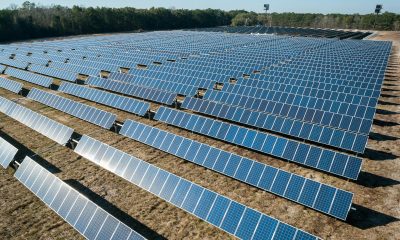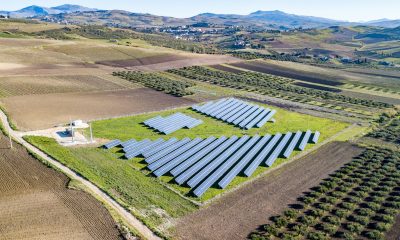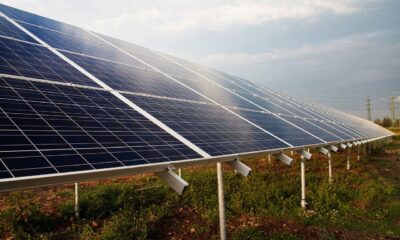Impact Investing
$7 Billion to Hydrogen Hubs: What the Biden Plan Includes to Boost the Emerging Industry
The California hydrogen hub, which was awarded $1.2 billion, aims to leverage existing clean energy technology, and produce hydrogen from renewable energy and biomass with a model for decarbonizing public transportation. The Gulf Coast hub focuses on large-scale hydrogen production through natural gas with carbon capture and electrolysis powered by renewable sources.

Seven “hydrogen hubs” located in 16 U.S. states will receive, in total, $7 billion in federal grants to boost the emerging industry.
The plan proposed by President Biden will serve to increase clean hydrogen production to 10 million metric tons by 2030 and 50 million metric tons by 2050, five times more than today. The regional hubs, which will be connected with new and existing infrastructure, aim to accelerate the domestic market for low-emission, low-cost hydrogen.
If you want to read more about the hydrogen hubs in the U.S. and to find the most important financial news of the day, download for free our companion app Born2Invest.

Where the 7 hydrogen hubs are located
Among the hydrogen hubs involved in the U.S. administration’s proposed plan is the Mid-Atlantic hydrogen hubs in Pennsylvania, Delaware, and New Jersey, which has been allocated $750 million to unlock hydrogen-driven decarbonization and reuse historic oil infrastructure.
The project will be used to develop renewable hydrogen production facilities powered by renewable energy and nuclear electricity. The $925 million Appalachian hydrogen hub in West Virginia, Ohio, and Pennsylvania, aims to leverage the region’s access to low-cost natural gas to produce low-cost clean hydrogen and store associated carbon emissions.
The California hydrogen hub, which was awarded $1.2 billion, aims to leverage existing clean energy technology and produce hydrogen from renewable energy and biomass with a model for decarbonizing public transportation, heavy trucking, and port operations.
The Gulf Coast hub, which received the same amount as the California hub, focuses on large-scale hydrogen production through natural gas with carbon capture and electrolysis powered by renewable sources.
The “heartland” hub in Minnesota, North Dakota, and South Dakota, which received $925 million, helps decarbonize agricultural fertilizer production, reduces the regional cost of clean hydrogen, and promotes the use of clean hydrogen in electric generation and for space heating in cold climates.
The $1 billion Midwest hydrogen hub, centered in the U.S. industrial and transportation corridor, will power steel and glass production, power generation, refining, heavy transportation, and sustainable aviation fuel.
Finally, the similarly sized Pacific Northwest hydrogen hub will be used to produce clean hydrogen exclusively from renewable sources. The administration hopes that the size of this hub will play a key role in reducing the cost of electrolyzers and making hydrogen more affordable.
__
(Featured image by geralt via Pixabay)
DISCLAIMER: This article was written by a third party contributor and does not reflect the opinion of Born2Invest, its management, staff or its associates. Please review our disclaimer for more information.
This article may include forward-looking statements. These forward-looking statements generally are identified by the words “believe,” “project,” “estimate,” “become,” “plan,” “will,” and similar expressions. These forward-looking statements involve known and unknown risks as well as uncertainties, including those discussed in the following cautionary statements and elsewhere in this article and on this site. Although the Company may believe that its expectations are based on reasonable assumptions, the actual results that the Company may achieve may differ materially from any forward-looking statements, which reflect the opinions of the management of the Company only as of the date hereof. Additionally, please make sure to read these important disclosures.
First published in StartupItalia. A third-party contributor translated and adapted the article from the original. In case of discrepancy, the original will prevail.
Although we made reasonable efforts to provide accurate translations, some parts may be incorrect. Born2Invest assumes no responsibility for errors, omissions or ambiguities in the translations provided on this website. Any person or entity relying on translated content does so at their own risk. Born2Invest is not responsible for losses caused by such reliance on the accuracy or reliability of translated information. If you wish to report an error or inaccuracy in the translation, we encourage you to contact us.

-

 Biotech1 week ago
Biotech1 week agoVytrus Biotech Marks Historic 2024 with Sustainability Milestones and 35% Revenue Growth
-

 Crypto3 days ago
Crypto3 days agoRipple Launches EVM Sidechain to Boost XRP in DeFi
-

 Africa1 week ago
Africa1 week agoCôte d’Ivoire Unveils Ambitious Plan to Triple Oil Output and Double Gas Production by 2030
-

 Business1 week ago
Business1 week agoThe TopRanked.io Weekly Digest: What’s Hot in Affiliate Marketing [NordVPN Affiliate Program Review]
























